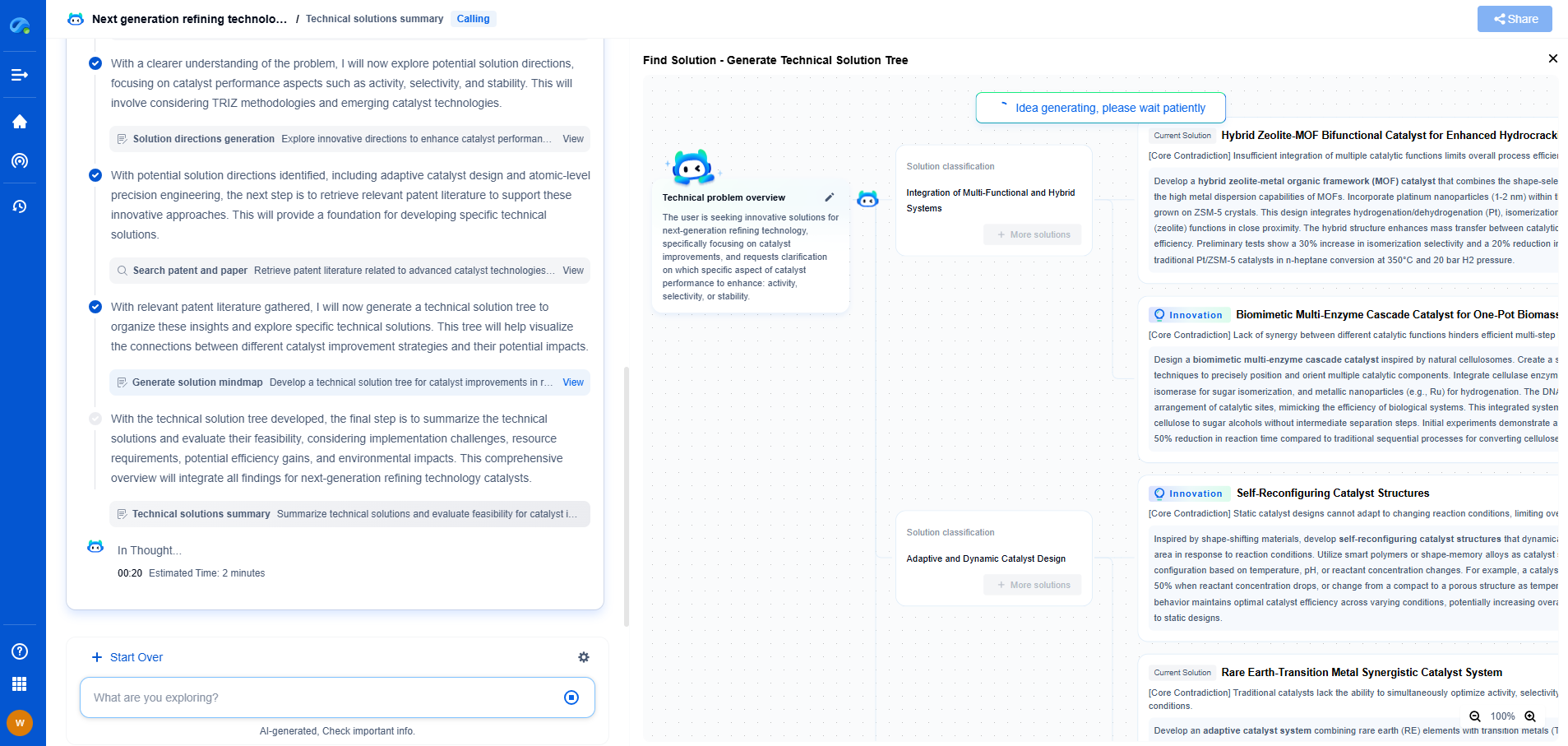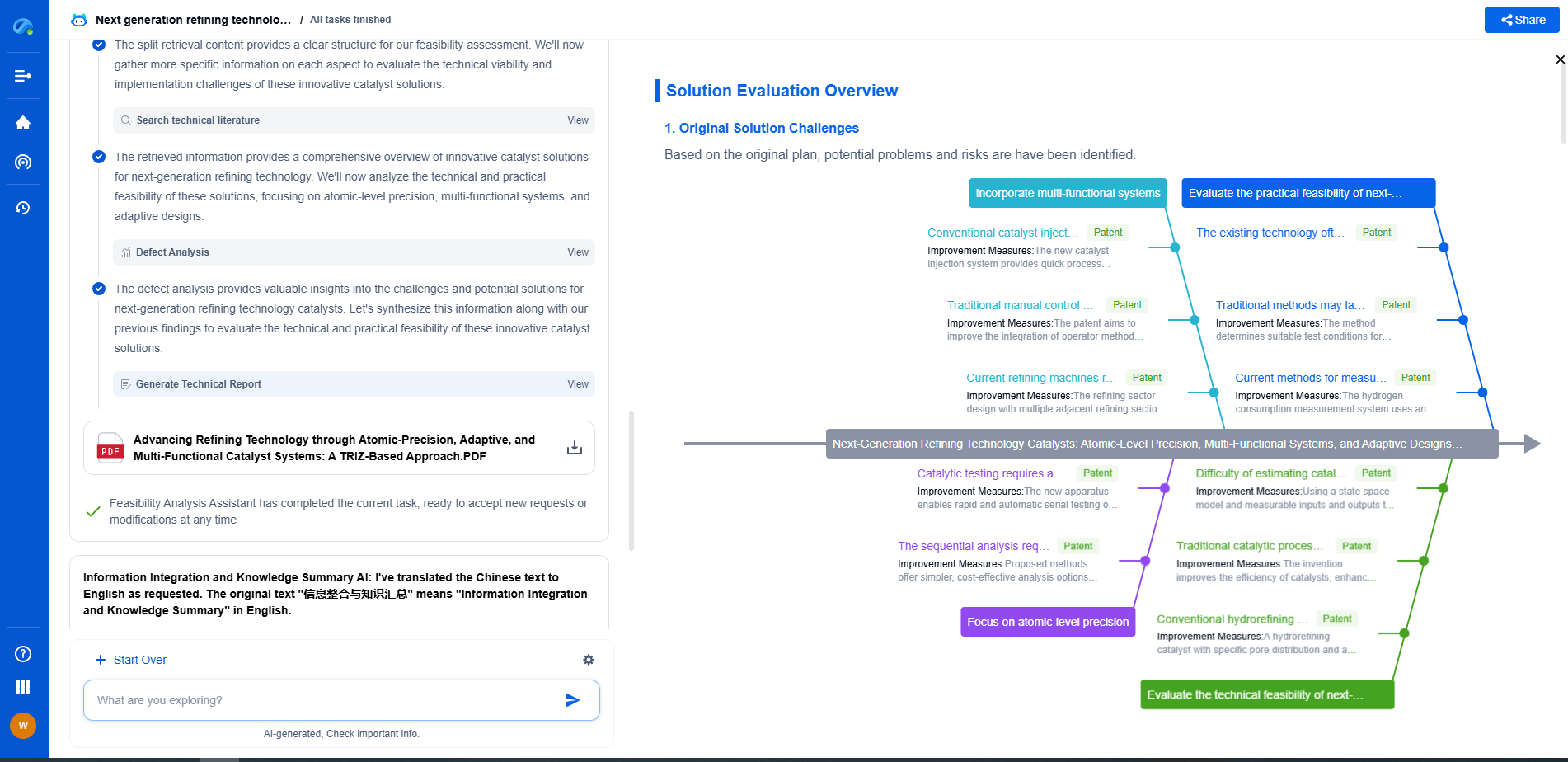Integrating AI into Power Supply Architecture: What You Need to Know
JUN 26, 2025 |
Understanding AI Integration in Power Supply Systems
AI integration in power supply architecture involves embedding machine learning algorithms and data analytics into the existing infrastructure. This enables the system to predict demand, optimize resource allocation, and improve decision-making processes. By collecting and analyzing vast amounts of data from various sources, AI can forecast usage patterns and adjust supply accordingly to avoid wastage and ensure a steady supply.
Applications of AI in Power Supply Architecture
1. **Demand Forecasting**: AI can accurately predict electricity demand by analyzing historical data and considering factors like weather conditions, time of day, and consumer behavior patterns. This helps in managing the grid efficiently and reducing overload risks.
2. **Grid Management**: AI systems can help in real-time monitoring and management of power grids. They can identify faults, predict failures, and suggest corrective actions, thereby minimizing downtime and enhancing reliability.
3. **Energy Optimization**: AI algorithms can optimize energy distribution by analyzing consumption patterns and identifying areas where energy can be saved. This leads to reduced operational costs and conservation of resources.
4. **Integration of Renewable Energy**: AI can facilitate the integration of renewable energy sources like solar and wind into the main grid. By predicting the output of these variable energy sources, AI ensures a stable energy supply and maximizes the use of clean energy.
Benefits of AI in Power Supply Architecture
The integration of AI brings several benefits to power supply architecture. Firstly, it enhances efficiency by ensuring that energy is supplied only when and where it is needed. This reduces unnecessary energy consumption and lowers operational costs. Secondly, AI improves reliability by enabling proactive maintenance and fault detection, thus minimizing downtime and outages.
Moreover, AI contributes to sustainability by optimizing the use of renewable energy sources and reducing carbon emissions. By accurately predicting demand and managing supply, AI helps in balancing the energy mix and promoting the use of cleaner alternatives.
Challenges in AI Integration
Despite its benefits, integrating AI into power supply architecture poses certain challenges. One significant challenge is the need for substantial initial investment in technology and infrastructure. Additionally, there is a need for skilled personnel who can develop, implement, and maintain AI systems.
Data security and privacy concerns also arise as large amounts of data are collected and analyzed. Ensuring the protection of this data is crucial to prevent unauthorized access and misuse. Furthermore, adapting existing infrastructure to accommodate AI technologies can be a complex and time-consuming process.
Future Prospects
The future of AI in power supply architecture looks promising. As technology advances, we can expect AI systems to become more sophisticated and capable. The continued development of machine learning and data analytics will enable even more precise demand forecasting and energy optimization.
Governments and organizations worldwide are recognizing the potential of AI in revolutionizing the power sector and are investing in research and development. Collaborations between technology firms and energy providers are likely to drive innovation and lead to the creation of more efficient, reliable, and sustainable power supply systems.
In conclusion, integrating AI into power supply architecture is a transformative step towards a more efficient and sustainable energy future. Despite the challenges, the benefits far outweigh the drawbacks, making it a worthwhile investment. As we move forward, embracing AI technologies will be crucial for meeting the growing energy demands of the modern world while minimizing environmental impact.
Stay Ahead in Power Systems Innovation
From intelligent microgrids and energy storage integration to dynamic load balancing and DC-DC converter optimization, the power supply systems domain is rapidly evolving to meet the demands of electrification, decarbonization, and energy resilience.
In such a high-stakes environment, how can your R&D and patent strategy keep up?
Patsnap Eureka, our intelligent AI assistant built for R&D professionals in high-tech sectors, empowers you with real-time expert-level analysis, technology roadmap exploration, and strategic mapping of core patents—all within a seamless, user-friendly interface.
👉 Experience how Patsnap Eureka can supercharge your workflow in power systems R&D and IP analysis. Request a live demo or start your trial today.
- R&D
- Intellectual Property
- Life Sciences
- Materials
- Tech Scout
- Unparalleled Data Quality
- Higher Quality Content
- 60% Fewer Hallucinations
Browse by: Latest US Patents, China's latest patents, Technical Efficacy Thesaurus, Application Domain, Technology Topic, Popular Technical Reports.
© 2025 PatSnap. All rights reserved.Legal|Privacy policy|Modern Slavery Act Transparency Statement|Sitemap|About US| Contact US: help@patsnap.com

